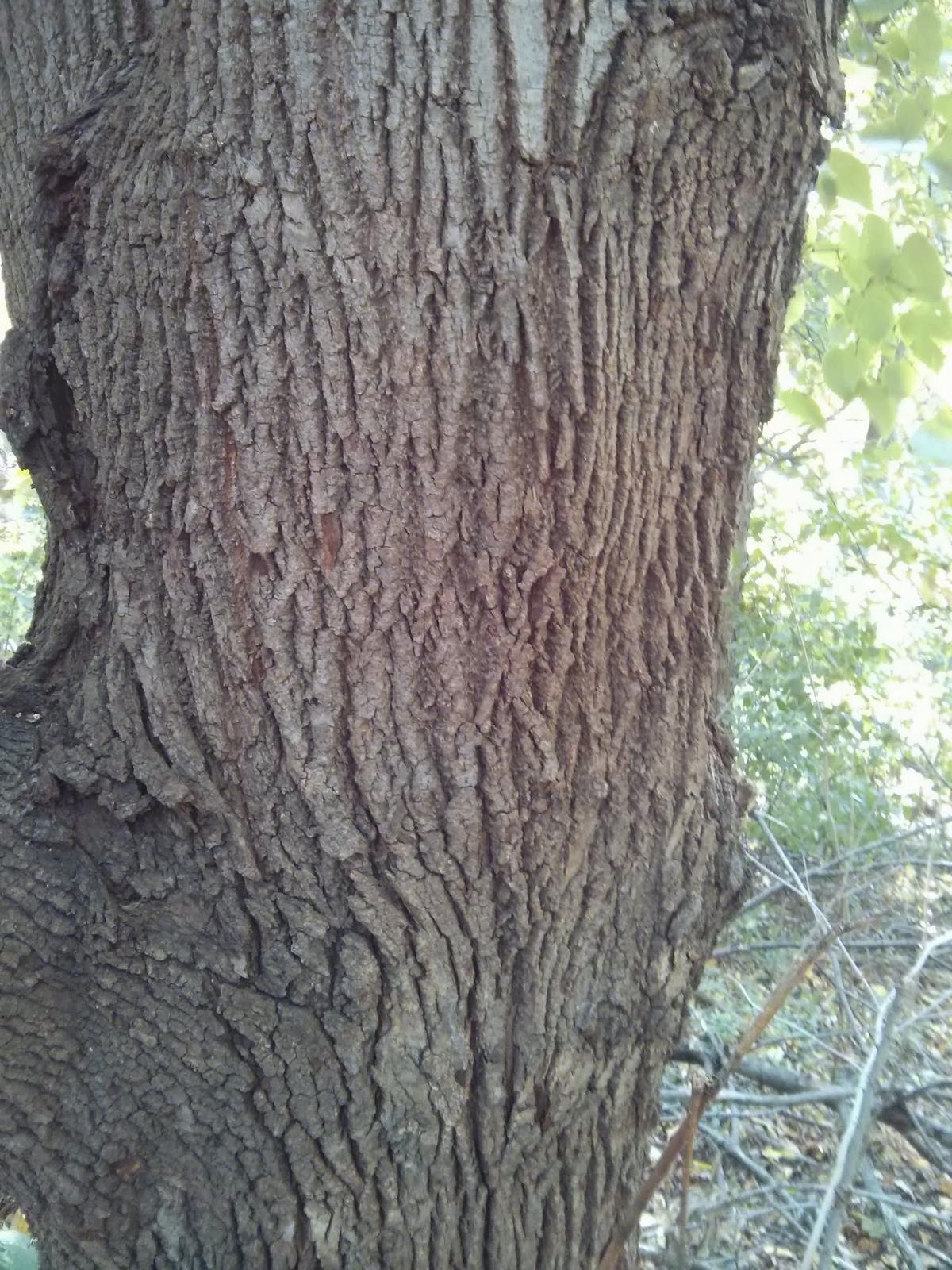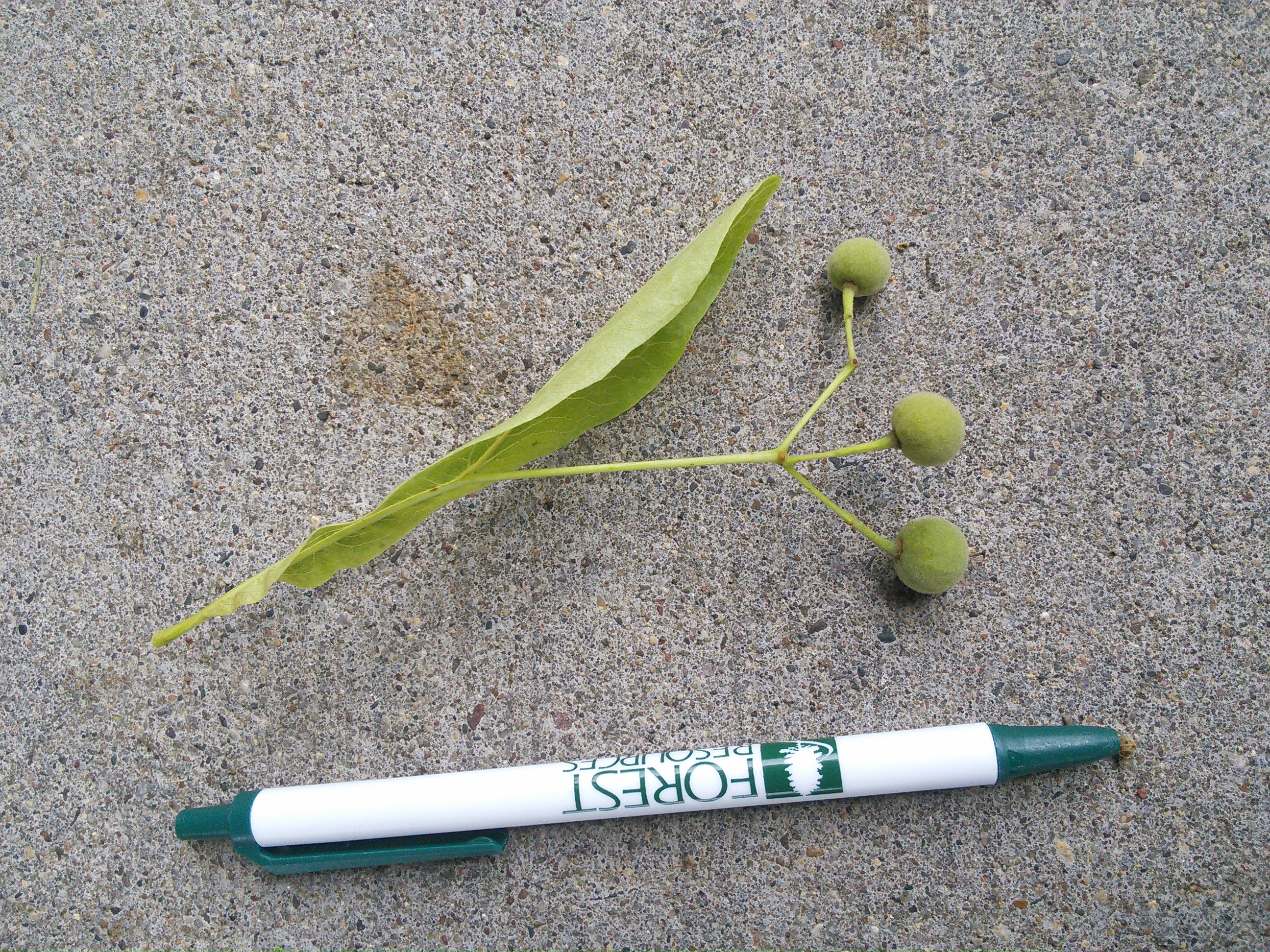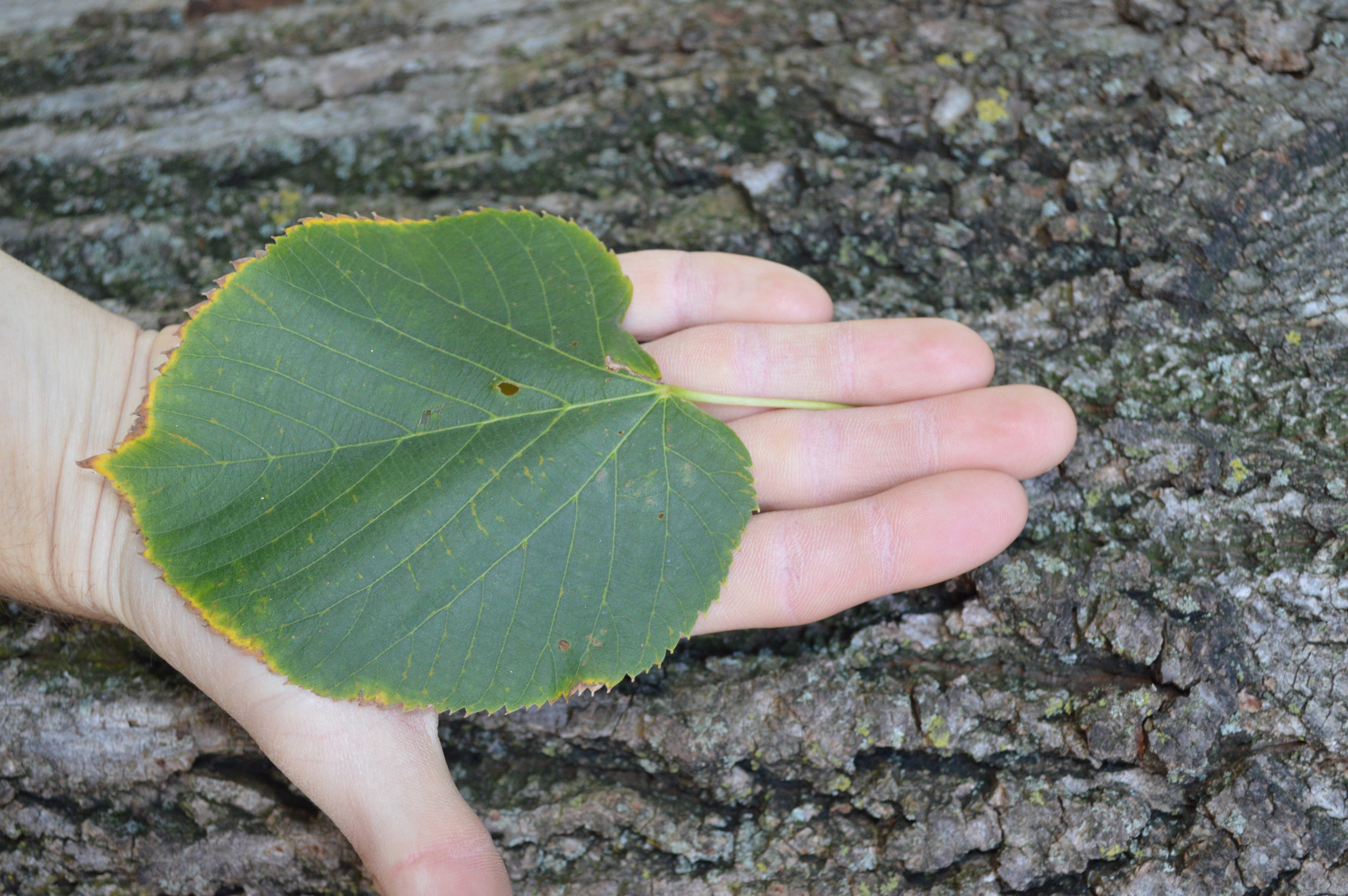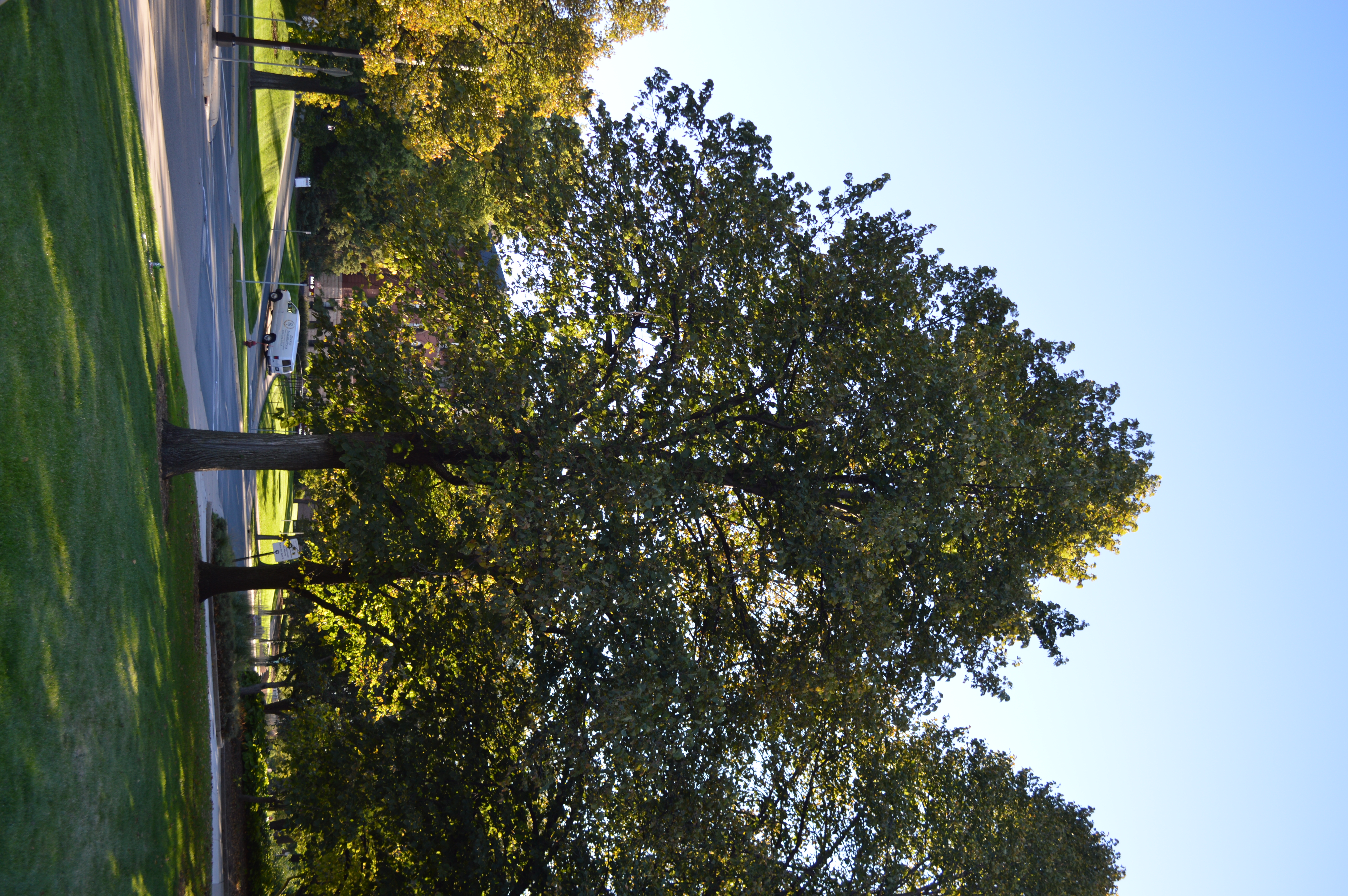Common Name: American basswood
Scientific Name:
Family: Tiliaceae
Genus: Tilia
Species: T. americana
Hardiness Zone: 2 to 8
Height: 60 to 100 ft
Width: 30 to 50 ft
Common Characteristics:
American linden, or also known as American basswood is a medium to large tree, typically 60-100 feet tall at maturity with a rounded crown. It has large leaves (up to 6 inches) that are ovate in shape, and dark green with acuminate tips, serrate margins, and uneven cordate bases. American basswood produces a cyme of 5-10 fragrant pale yellow flowers in late spring and early summer. The cyme then produces two small brown nutlets subtending a leafy bract. Fall color is an undistinguished pale green to pale yellow. Basswood twigs grow in a zig-zag pattern and can be green, red, or brown in color. The buds, like the twigs, can be green or red. The bark on an American basswood tree tends to be gray or brown with shallow, flat-topped ridges.
Where It Grows:
American basswood is a popular urban tree and is planted in wide boulevards and parks in city landscapes. It tolerates both acidic and alkaline soils. It is intolerant of road salt or spray, so it is best to plant this tree at least 30 feet away from busy roads.
How It's Used:
American basswood is a very popular urban landscape tree in Minnesota due to its large crown, providing lots of shade. The wood is soft and has a fine grain, making it a popular choice for wood carving and can also be used for furniture and pulpwood. Honey made from these flowers is a prized gourmet food item, and the flowers can also be used to make tea. The sweet tree sap can also be used to make syrup.
Ecosystem Services:
The trees' fragrant flowers attract pollinators such as bees and butterflies, making it a good choice for nectar in city areas where they may not be as many gardens or wildflowers. Bees produce rich, sweet honey from the nectar. American basswood seeds are often eaten by chipmunks and squirrels. The tree also provides a habitat for wildlife.
Where It's Native To:
Its native range includes Minnesota and extends across the northeastern half of North America. Native habitats include upland hardwood forests and valleys that have moist soils. It is the northernmost of the basswood species.
Known Varieties and Their Traits:
- American Sentry® American basswood (Tilia americana 'MckSentry') - Has a very symmetrical (pyramidal) canopy. Grows 45 feet high and 30 feet wide. It is reported that it has some resistance to Japanese beetles.
- Boulevard American basswood (Tilia americana 'Boulevard') - Narrow pyramidal habit; 50 feet high by 25 feet wide.
- Legend American basswood (Tilia americana 'DTR 123') - Has a consistent good branching structure. It has thick, green leaves in late summer. During the winter, the stems and buds are bright red.
- Redmond American basswood (Tilia americana 'Redmond') - This is a dense, pyramidal cultivar. (Formerly classified as Tilia x euchlora 'Redmond').
- var. heterophylla white basswood (Tilia americana var. heterophylla) - Once considered a separate species, it is now a variety of the American linden. It is known as white basswood or bee-tree linden. It has very similar characteristics to American linden, except that the lower sides of the leaves are covered with dense hairs, giving the underside of the leaf a white appearance.
- Continental Appeal™ white basswood (Tilia americana var. heterophylla 'Continental Appeal') - This variety has a narrow, oval form; 50 feet high by 30 feet wide). The leaves have a dark green upper surface and a white lower surface.
Problems:
Insects such as aphids, Japanese beetle, and linden beetle all pose to be potential threats to the foliage of the tree. Fungal problems such as anthracnose and Verticillium wilt also pose issues.
References:
Tilia americana 'Redmond'.



